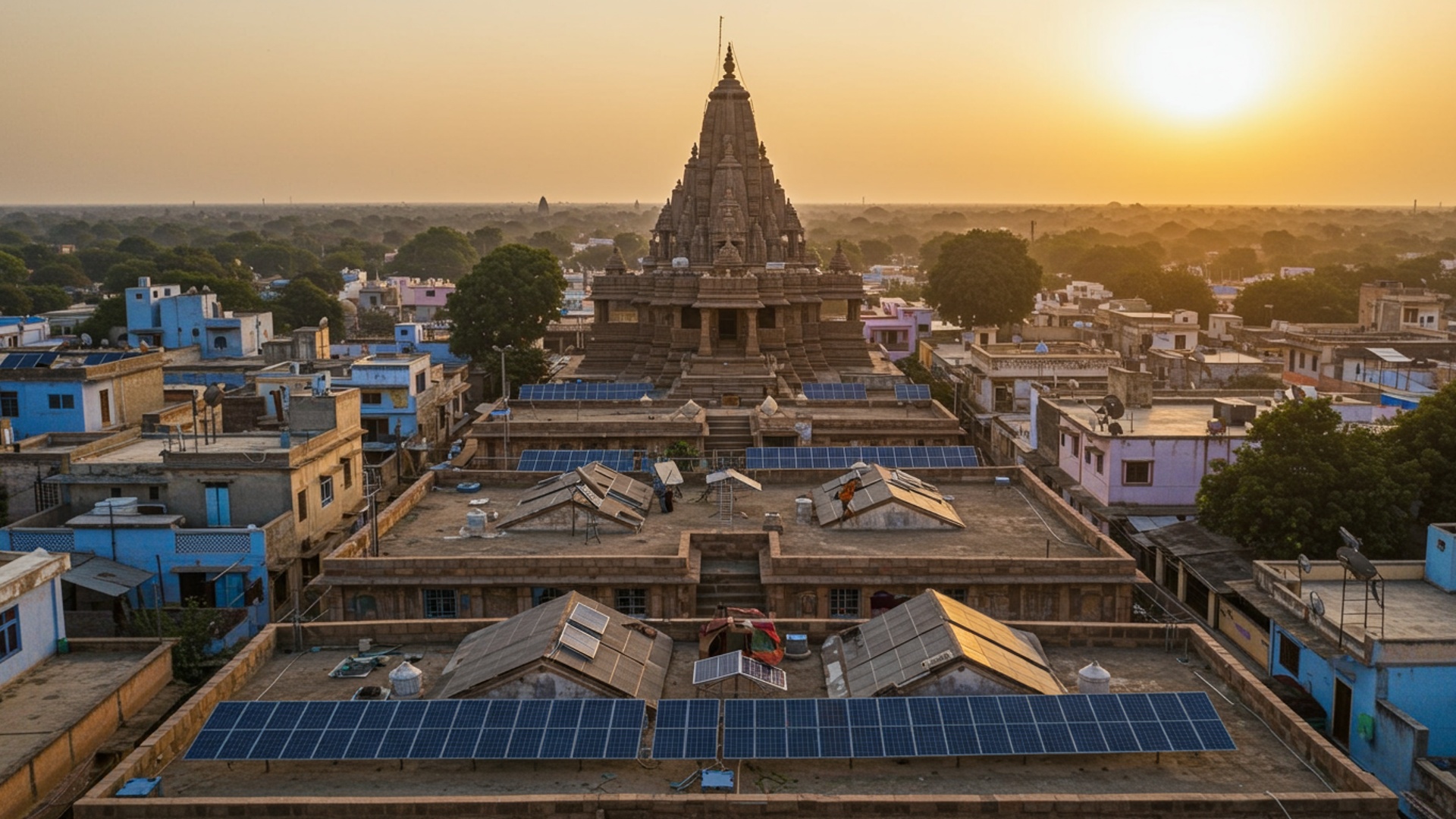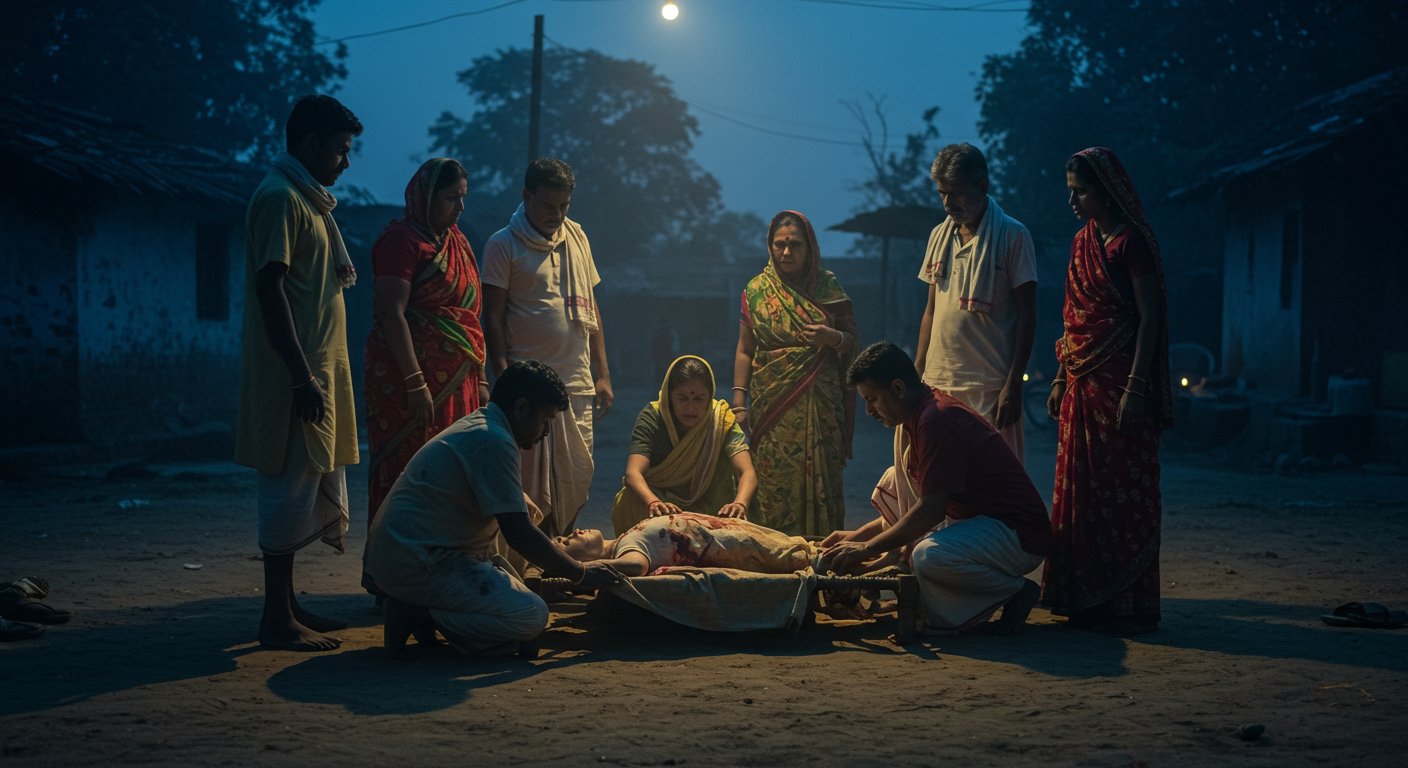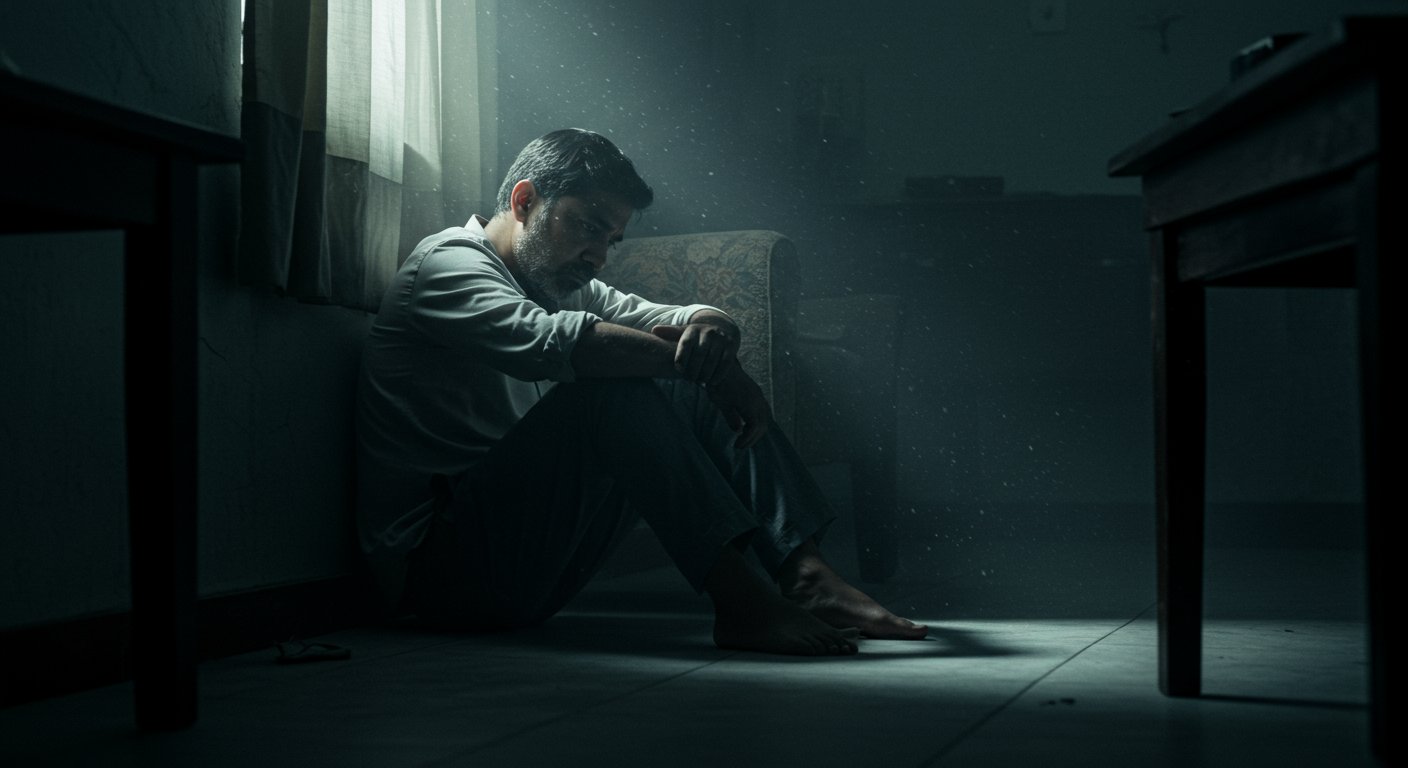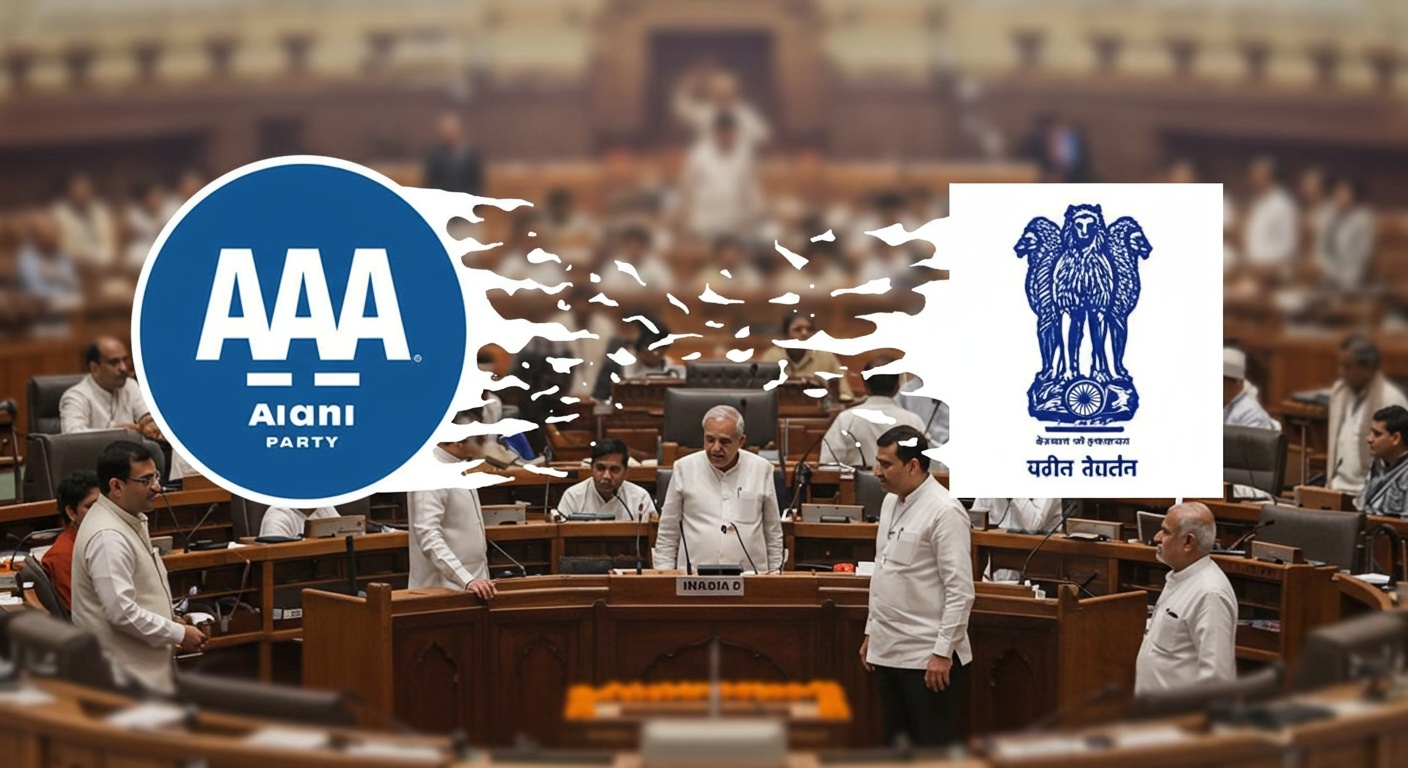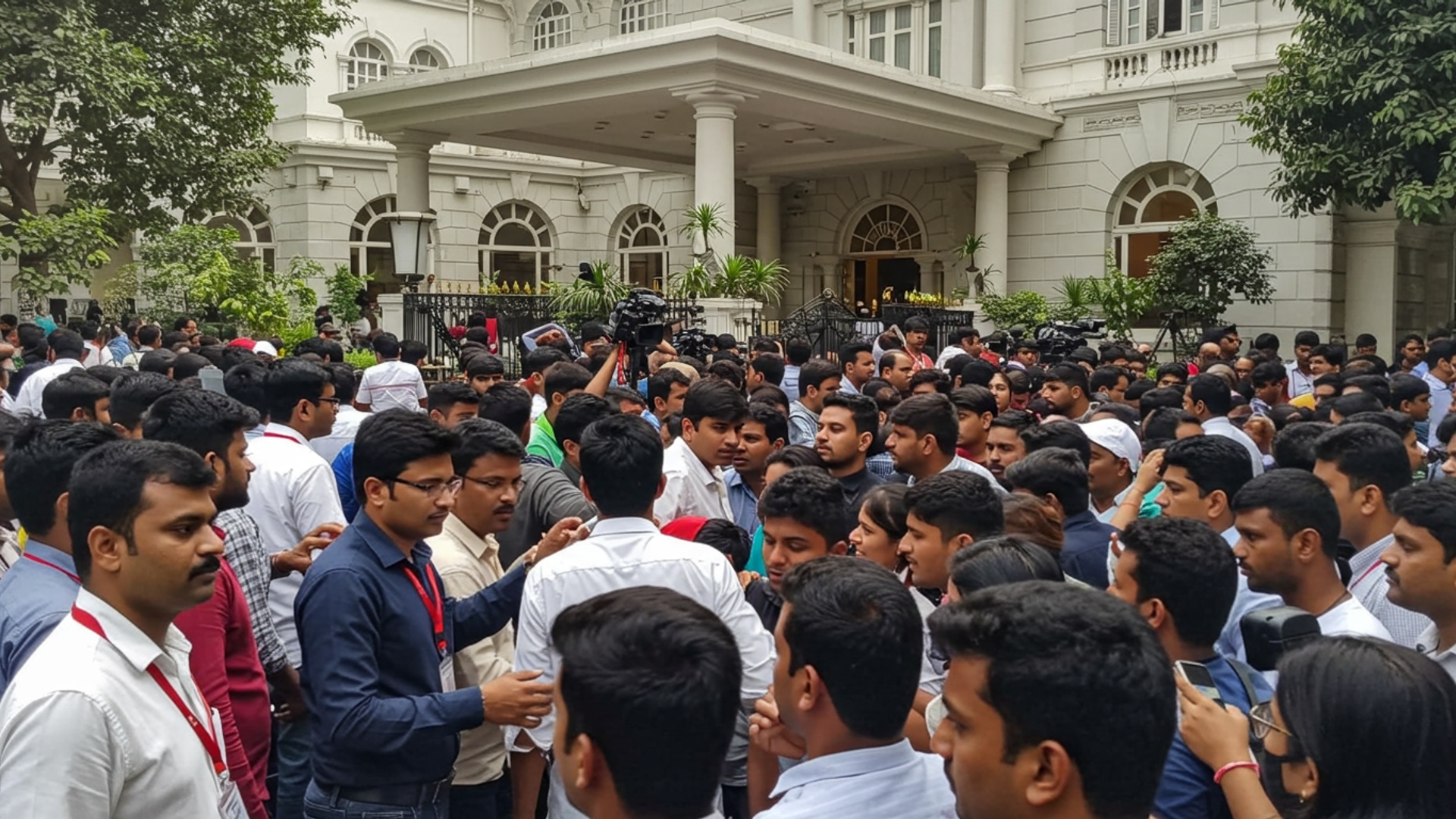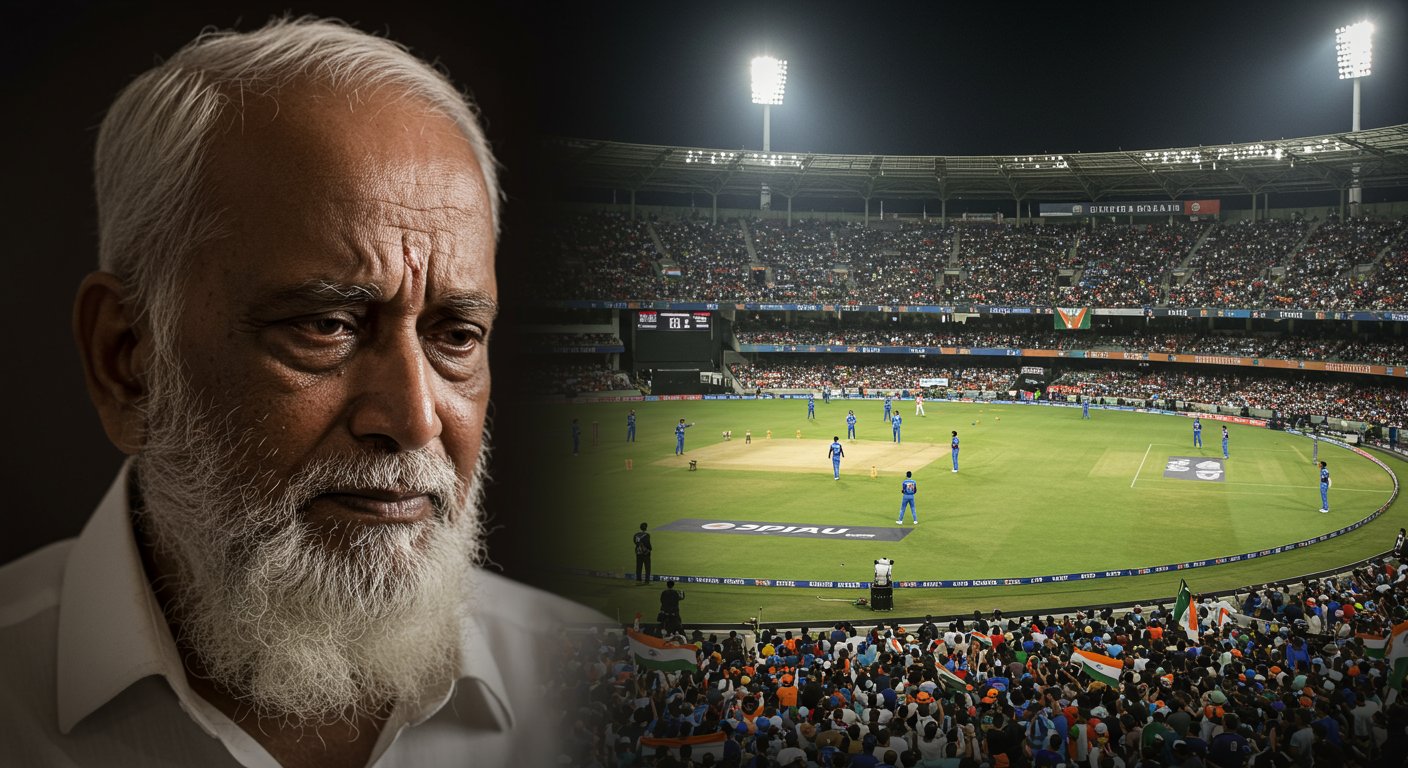A quiet village in India now shines with endless power, starting a big change for the nation’s energy future. Modhera, a small place in Gujarat, has made an amazing achievement, becoming India’s very first village to run completely on solar energy, giving electricity all day and all night. This big change, happening right now, is making life much better for everyone, giving power to homes, schools. local shops. People living there, who once had many power cuts, now have steady electricity. This helps them find new chances, get better schooling. live healthier lives. This essential step not only shows India’s promise for clean power but also sets a strong example, showing how clean energy can truly change towns and open the way for a brighter, better future for the whole country.
A Village Powered by the Sun
Modhera, a small village located in the Mehsana district of Gujarat, India, has achieved a remarkable milestone, becoming India’s first village to be fully powered by solar energy around the clock. This change means that Modhera’s homes, schools. businesses now receive electricity twenty-four hours a day, seven days a week, relying entirely on power from the sun. The village, already famous for its ancient Sun Temple, has now gained global attention as a model for clean energy use and community empowerment. The project was officially announced as India’s first 24/7 solar-powered village by Prime Minister Narendra Modi on October 9, 2022. This big step shows how new energy solutions can change daily life in rural areas.
How the Solar System Works
The switch to solar power in Modhera was made possible by a complete energy setup. This setup includes a large solar power plant on the ground and many smaller solar panels installed on rooftops throughout the village. Specifically, a 6-megawatt (MW) solar plant was set up in nearby Sujjanpura. In addition to this, over 1,300 homes and public buildings in Modhera have one-kilowatt (kW) solar panels on their rooftops. A very vital part of this system is the Battery Energy Storage System (BESS). This system has a capacity of 15 megawatt-hours (MWh). During the day, the solar panels produce electricity, which is used directly by the village. Any extra power made during the day is stored in the large batteries. After the sun goes down, or on cloudy days, the stored energy from these batteries provides power to the village, ensuring a continuous supply of electricity. This way, Modhera is rarely dependent on the main power grid for its electricity needs, drawing only about 0. 01% from it. The project also includes smart meters for homes, solar electric vehicle charging points. smart street lights that work with sensors.
Benefits for Daily Life
The constant supply of solar power has brought many good changes to the lives of Modhera’s residents. One of the biggest benefits is the large reduction in electricity bills. Many households now pay little to no money for their electricity, with some even having zero bills. Before this, residents often paid high amounts, sometimes up to 2,000 rupees a month. Now, with solar power, they can use more electrical appliances like refrigerators, washing machines. even air conditioners without worrying about high costs. This has made home life much more comfortable. The solar project also allows villagers to earn money by selling any extra electricity they produce back to the main power grid. This turns energy users into energy makers, adding to their household income. The shift to clean energy also means better air quality and a healthier living environment.
Changes in Education and Health
The steady power supply has also led to big improvements in education and health services within the village. Schools now have continuous electricity, which helps improve learning conditions. With reliable power, schools can use digital teaching tools and have fans to keep classrooms cool, making it a better place for students to learn. This stability supports a more modern and effective learning environment. For health, the consistent electricity means that health centers and homes can run medical equipment reliably. This helps in providing better care and improving overall health conditions for the community. The United Nations has even noted that the project is making the village healthier. The changes have had a positive impact on the well-being of all people in Modhera.
Local Economy Gets a Boost
The solar power project has also had a good effect on the local economy, creating new chances for people to earn money. With guaranteed electricity, many women have started small businesses from their homes. These include activities like sewing, making food items such as papads. offering digital services. This has helped women become more financially independent and contribute more to their families’ income. Farmers in Modhera have also seen benefits. They used to pay high electricity bills for their farm work. now with solar power, they save a lot of money. These savings can be put back into their farms or used for other family needs. The overall increase in stable power has led to more economic activities and a better quality of life for many in the village.
Making Power Affordable
The financial model behind Modhera’s solar project is designed to make electricity both widely available and affordable for everyone. The project cost around $9. 7 million (about 800 million Indian rupees or 65-69 crore rupees), with funding split equally between the central government of India and the Gujarat state government. This shared funding model ensured that the high initial cost of setting up the solar plants and battery systems did not fall heavily on the villagers. As a result, residents can save between 60% and 100% on their electricity bills. The system works in a way that if a household produces more electricity than it uses, the extra power goes back into the main grid. the family gets money or credit for it. This ‘net metering’ system helps to make electricity costs very low or even zero for many, directly improving their financial situation. The focus on energy savings allows families to spend their money on other essential things like their children’s education and better food.
A Project with Many Helpers
The success of Modhera’s solar transformation is a result of efforts from several vital groups. The idea for the project came from the Ministry of New and Renewable Energy (MNRE) of the Government of India, which also provided significant financial help. The Government of Gujarat also played a key role by co-funding and managing the project locally. Gujarat Power Corporation Limited (GPCL) was the main group responsible for putting the project into action. They oversaw the setting up of the large solar plant, the rooftop panels. the battery storage system. Technical partners also helped with advanced systems to make sure the solar energy was produced and used in the best way. This teamwork between different government levels and technical experts made the vision of a solar-powered village a reality.
A Bright Path for the Future
Modhera’s success as India’s first 24/7 solar-powered village sets a strong example for sustainable energy use across the country and even globally. This project shows that it is possible for rural areas to have constant, clean electricity. The model used in Modhera, combining a central solar plant with rooftop panels and battery storage, can be copied in other villages facing power shortages. This initiative aligns with India’s larger goals of using more renewable energy, reducing its reliance on fossil fuels. cutting down carbon emissions. It supports the idea of “self-reliant India” by allowing communities to produce their own power. The project has been praised by international organizations, with the UN Secretary-General calling it an example of “reconciliation between humankind and planet.” Modhera is now a shining example, guiding the path towards a greener and more energy-independent future for many more communities. ![]()
